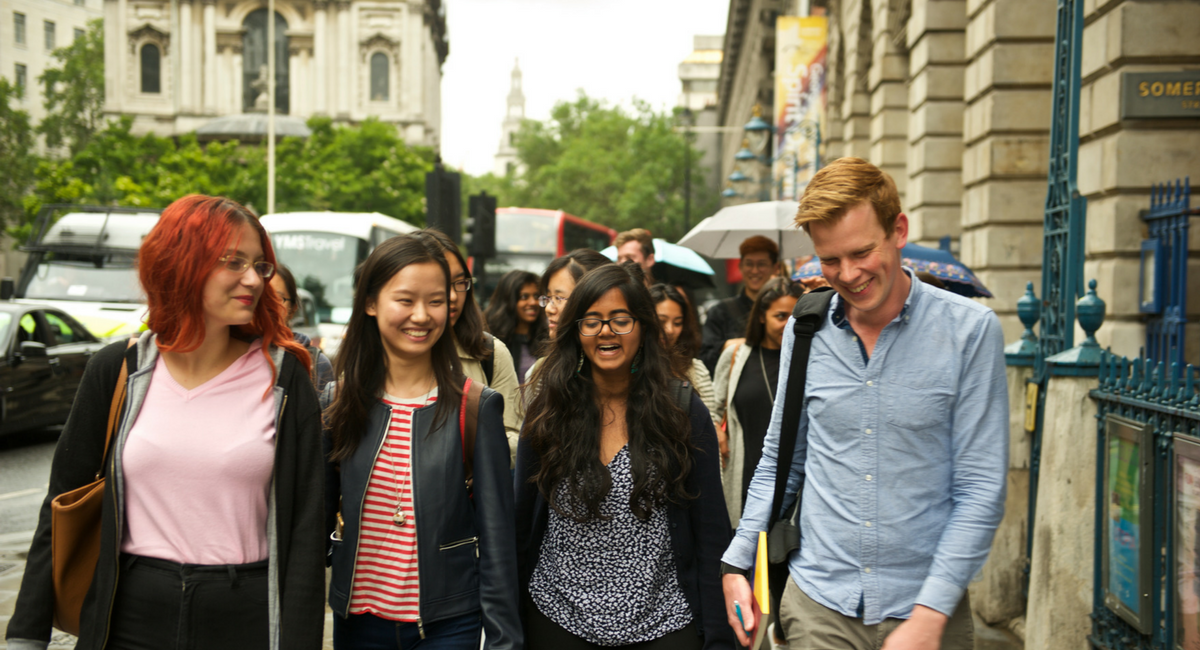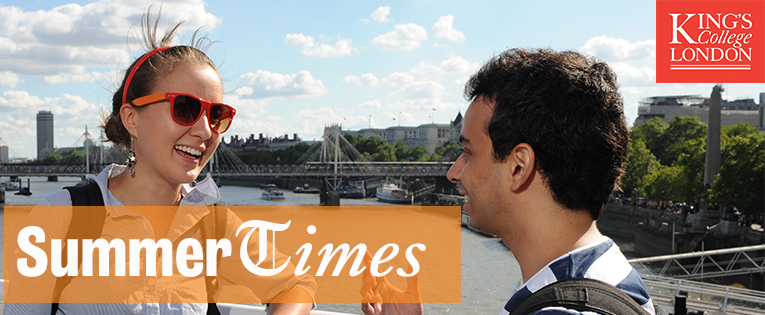
Having spent most of my life in London, I have come to realise how much this city has to teach us: not just in its vast array of museums (from National Galleries to pop-up exhibitions), but also through our everyday interactions with the city’s streets and citizens. When I took over the Literature in the City module, I wanted to draw on London as a tool to enhance our classroom experience.
I therefore decided to map the literature we studied onto the spaces they described. Virginia Woolf’s walk down the Strand, Charles Dickens’s encounters in St. Giles, W.B. Yeats’s melancholy on Fleet Street, all these spaces are central to the text we study. These writers create a window into a rich and deeply imagined terrain, and it is one that is right outside the main entrance to King’s. Encountering these spaces in conjunction with the literature itself, offers not only a deep sense of what this writing is trying to express, but also – and, perhaps, more crucially – just how much London has evolved!
There is a creative element to all our wanderings through the city – James Joyce certainly discovered as much in his journeys through Dublin – and so I actively encourage students to record their experience of the sites we visit. We pause at our locations, writing personal responses that capture the similarities and differences with the literature we have studied. ‘If we turn and go past the anchored ships towards London’, do we still see what Woolf called ‘the most dismal prospect in the world’? For some, contemporary London’s glass skyline reiterates Woolf’s point. For others it shows a glowing metropolis and a global icon.
One of the final essay questions is designed to critically evaluate these creative encounters. It was a mode of assessment I adapted from some undergraduate teaching at King’s. But this summer school has also informed my wider teaching at the University – not least in opening up the classroom. While our timetable directs us to the lecture hall, what better way to learn about, say, the London Blitz than by scouring the city for its legacy? (Bloomsbury, you should know, has a lot to offer!) Probing through the layers of London’s history is often a difficult task, but the places such as the Museum of London are filled with objects that can help to resurrect the past.
It is because of these experiences on the summer school, that the mantra “the city is my classroom” has become a recurrent phrase in so much of my teaching at King’s. Be it through explorations in disused tube stations or trips to the Black Cultural Archives, getting out into the city has become integral to my ability to teach the complexities and changes London has to offer.
By Dr George Legg
